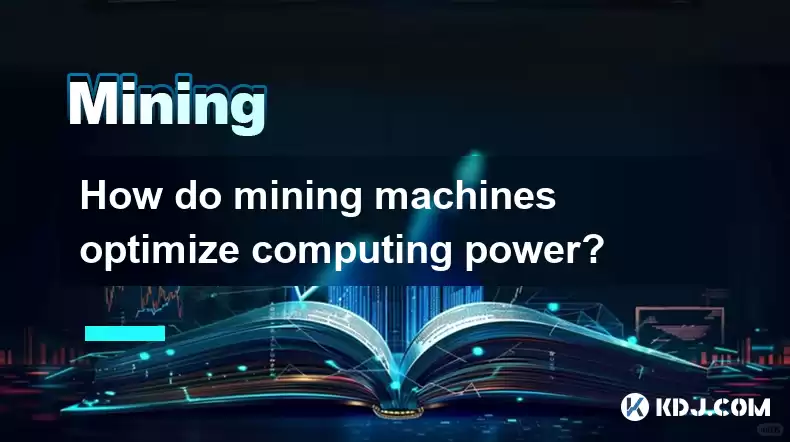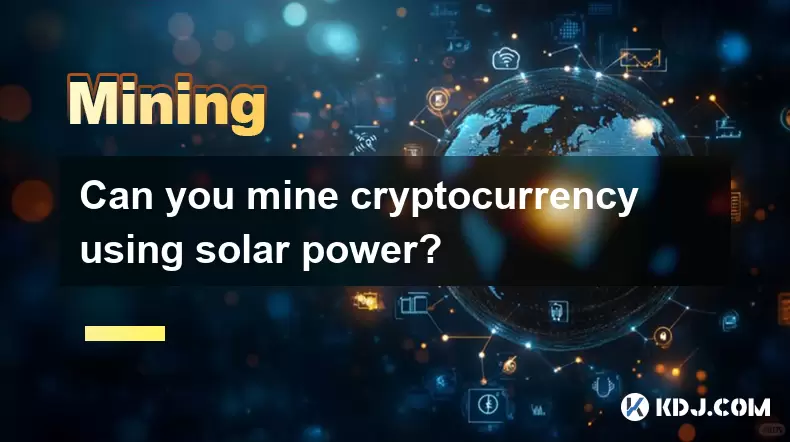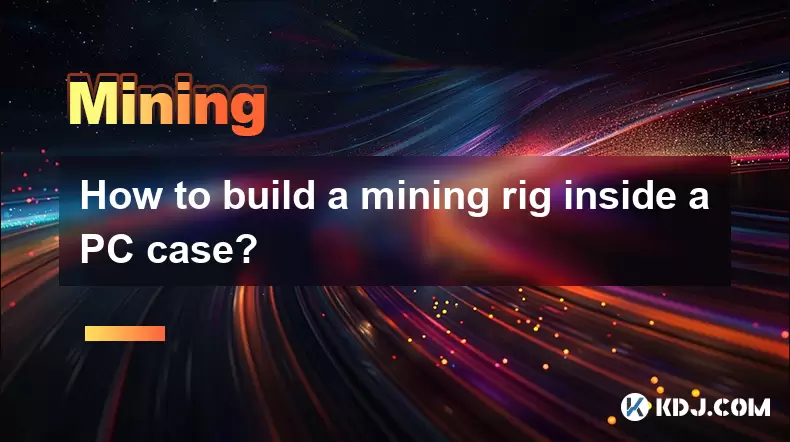-
 Bitcoin
Bitcoin $117500
2.15% -
 Ethereum
Ethereum $3911
6.19% -
 XRP
XRP $3.316
10.79% -
 Tether USDt
Tether USDt $1.000
0.01% -
 BNB
BNB $787.2
2.24% -
 Solana
Solana $175.2
4.15% -
 USDC
USDC $0.9999
0.00% -
 Dogecoin
Dogecoin $0.2225
8.40% -
 TRON
TRON $0.3383
0.28% -
 Cardano
Cardano $0.7868
6.02% -
 Stellar
Stellar $0.4382
9.34% -
 Hyperliquid
Hyperliquid $40.92
7.56% -
 Sui
Sui $3.764
7.63% -
 Chainlink
Chainlink $18.48
10.66% -
 Bitcoin Cash
Bitcoin Cash $582.1
1.88% -
 Hedera
Hedera $0.2601
6.30% -
 Avalanche
Avalanche $23.33
4.94% -
 Ethena USDe
Ethena USDe $1.001
0.02% -
 Litecoin
Litecoin $122.3
2.04% -
 UNUS SED LEO
UNUS SED LEO $8.969
-0.27% -
 Toncoin
Toncoin $3.339
0.86% -
 Shiba Inu
Shiba Inu $0.00001287
4.30% -
 Uniswap
Uniswap $10.43
7.38% -
 Polkadot
Polkadot $3.861
5.08% -
 Dai
Dai $1.000
0.02% -
 Bitget Token
Bitget Token $4.513
3.41% -
 Monero
Monero $267.7
-6.18% -
 Cronos
Cronos $0.1499
4.14% -
 Pepe
Pepe $0.00001110
5.15% -
 Aave
Aave $284.9
8.28%
How do mining machines optimize computing power?
Optimizing mining machines involves maximizing hash rate via hardware selection, careful overclocking, efficient cooling, and software updates, while minimizing energy consumption for profitability.
Mar 06, 2025 at 07:30 am

Key Points:
- Mining machine optimization focuses on maximizing hash rate while minimizing energy consumption.
- This involves hardware selection, overclocking (carefully!), efficient cooling, and software configuration.
- Regular maintenance, firmware updates, and environmental control are crucial for sustained performance.
- Understanding the specific algorithm your miner targets is vital for effective optimization.
How Do Mining Machines Optimize Computing Power?
Optimizing the computing power of a cryptocurrency mining machine is a multifaceted process aimed at maximizing its hash rate – the speed at which it solves cryptographic problems – while simultaneously minimizing energy consumption. This balance is crucial for profitability in the competitive world of cryptocurrency mining. Several key areas need attention for effective optimization.
Hardware Selection: The Foundation of Power
The choice of mining hardware is paramount. Application-Specific Integrated Circuits (ASICs) are generally preferred for their specialized design and superior efficiency compared to general-purpose GPUs or CPUs, particularly for proof-of-work cryptocurrencies like Bitcoin. When selecting an ASIC, factors like the hash rate (measured in hashes per second), power consumption (measured in watts), and the algorithm it supports are crucial considerations. Choosing a miner designed for the specific cryptocurrency you intend to mine is vital for optimal performance.
Overclocking: A Risky but Potentially Rewarding Approach
Overclocking involves increasing the clock speed of the ASIC's components to boost its hash rate. However, this increases power consumption and generates more heat. Improper overclocking can lead to instability, reduced lifespan, and even hardware damage. Proceed with caution, using reputable overclocking guides and monitoring temperatures closely. Start with small increments and gradually increase until you find a stable, optimal balance between performance and stability.
- Start with small overclocking increments.
- Monitor temperatures closely using monitoring software.
- Ensure adequate cooling to prevent overheating.
- Test for stability after each adjustment.
- Revert to default settings if instability occurs.
Cooling: Keeping Your Miner Cool and Efficient
Heat is the enemy of mining hardware. Excessive heat degrades performance and shortens the lifespan of components. Efficient cooling is essential. This can involve using high-performance fans, heatsinks, and potentially liquid cooling systems, especially for high-end ASICs. Ensure proper airflow around the mining machine, avoiding dust buildup which can impede cooling efficiency. Regular cleaning is crucial for maintaining optimal cooling.
Software Configuration and Firmware Updates:
The software controlling your mining machine plays a significant role in its performance. Using efficient mining software and keeping it updated is crucial. The software manages the miner's interaction with the mining pool, optimizing its work distribution. Regularly check for and install firmware updates provided by the manufacturer. These updates often include performance improvements and bug fixes that can significantly enhance the mining machine's efficiency.
Environmental Factors: Beyond the Machine
The environment in which the mining machine operates significantly impacts its performance. High ambient temperatures can severely reduce efficiency and lifespan. Maintaining a cool environment is crucial. Dust accumulation also negatively impacts cooling, reducing performance. Regular cleaning and maintaining a dust-free environment are vital.
Power Supply: The Unsung Hero
A stable and reliable power supply is critical. Underpowered or unstable power supplies can lead to performance issues, instability, and even damage to the mining hardware. Ensure that the power supply's wattage rating exceeds the miner's maximum power consumption, allowing for sufficient headroom. Use high-quality power supplies from reputable brands for optimal reliability.
Algorithm Understanding: Tailoring to the Target
Different cryptocurrencies use different mining algorithms. Understanding the specific algorithm your miner is targeting is crucial for optimization. Some algorithms are more suited to certain hardware configurations than others. Choosing the right hardware and software for the target algorithm maximizes efficiency.
Regular Maintenance: The Ongoing Optimization
Regular maintenance is key to sustained performance. This includes checking for errors, cleaning the machine, ensuring proper cooling, and monitoring performance metrics. Regularly review your mining software logs for any errors or warnings. Addressing issues promptly prevents potential performance degradation.
Frequently Asked Questions:
Q: Can I overclock my mining machine indefinitely to maximize hash rate?
A: No. Overclocking increases heat and stress, potentially damaging the hardware and shortening its lifespan. Find a balance between performance and stability.
Q: What is the most crucial factor in optimizing mining machine computing power?
A: While all aspects are important, selecting appropriate hardware for the target algorithm is arguably the most critical starting point.
Q: How often should I update the firmware on my mining machine?
A: Check the manufacturer's recommendations; however, generally, installing updates when they are released is advisable for optimal performance and bug fixes.
Q: What happens if my mining machine overheats?
A: Overheating can lead to reduced performance, instability, and potentially irreversible hardware damage. Ensure adequate cooling is always maintained.
Q: Is it always better to use the highest possible overclock settings?
A: No, pushing overclocking too far can lead to instability and damage. Prioritize stability and longevity. Find a balance between increased hash rate and reduced lifespan.
Q: Can I use the same mining machine for different cryptocurrencies?
A: It depends on the machine's capabilities. Some machines are designed for specific algorithms; others may support multiple algorithms, but their efficiency might vary.
Q: How important is the quality of the power supply for mining?
A: Extremely important. An unstable or underpowered supply can lead to performance issues, instability, and even hardware damage. Use a high-quality power supply with sufficient wattage.
Disclaimer:info@kdj.com
The information provided is not trading advice. kdj.com does not assume any responsibility for any investments made based on the information provided in this article. Cryptocurrencies are highly volatile and it is highly recommended that you invest with caution after thorough research!
If you believe that the content used on this website infringes your copyright, please contact us immediately (info@kdj.com) and we will delete it promptly.
- SNEK, Cardano, and the Contributor's Conundrum: A Meme Coin's Fight for Recognition
- 2025-08-08 16:30:12
- Toshi Crypto's Wild Ride: Rally, Demand Slump, and What's Next
- 2025-08-08 16:30:12
- Ethereum, Staking Yields, and DeFi Exposure: A New Era for Investors?
- 2025-08-08 15:10:12
- Unilabs Pumps MIA, Binance Coin Bouncing Back, and Ethereum's Bearish Blues
- 2025-08-08 15:10:12
- Ethereum's Wyckoff Markup and Market Rotation: A New Era?
- 2025-08-08 15:30:12
- Ethereum, Vitalik Buterin, and the Overleveraged Game: A Balancing Act
- 2025-08-08 15:30:12
Related knowledge

What is "proof-of-work" and how does it relate to mining?
Aug 07,2025 at 02:03pm
Understanding the Concept of Proof-of-WorkProof-of-work (PoW) is a consensus mechanism used in blockchain networks to validate transactions and secure...

What are the differences between mining on Windows vs. Linux?
Aug 06,2025 at 11:29pm
Overview of Cryptocurrency Mining PlatformsCryptocurrency mining involves using computational power to solve complex cryptographic puzzles and validat...

How to use an old computer for cryptocurrency mining?
Aug 07,2025 at 12:42pm
Understanding the Feasibility of Using an Old Computer for MiningUsing an old computer for cryptocurrency mining may seem outdated, but it is still te...

Can you mine cryptocurrency using solar power?
Aug 07,2025 at 12:00am
Understanding the Basics of Cryptocurrency MiningCryptocurrency mining involves validating transactions on a blockchain network by solving complex cry...

How to build a mining rig inside a PC case?
Aug 06,2025 at 11:01pm
Understanding the Basics of a Mining Rig in a PC CaseBuilding a mining rig inside a PC case involves transforming a standard computer chassis into a d...

What are the best cryptocurrencies to mine with an ASIC?
Aug 08,2025 at 01:22am
Understanding ASIC Mining and Its Role in CryptocurrencyASIC stands for Application-Specific Integrated Circuit, a specialized hardware designed to pe...

What is "proof-of-work" and how does it relate to mining?
Aug 07,2025 at 02:03pm
Understanding the Concept of Proof-of-WorkProof-of-work (PoW) is a consensus mechanism used in blockchain networks to validate transactions and secure...

What are the differences between mining on Windows vs. Linux?
Aug 06,2025 at 11:29pm
Overview of Cryptocurrency Mining PlatformsCryptocurrency mining involves using computational power to solve complex cryptographic puzzles and validat...

How to use an old computer for cryptocurrency mining?
Aug 07,2025 at 12:42pm
Understanding the Feasibility of Using an Old Computer for MiningUsing an old computer for cryptocurrency mining may seem outdated, but it is still te...

Can you mine cryptocurrency using solar power?
Aug 07,2025 at 12:00am
Understanding the Basics of Cryptocurrency MiningCryptocurrency mining involves validating transactions on a blockchain network by solving complex cry...

How to build a mining rig inside a PC case?
Aug 06,2025 at 11:01pm
Understanding the Basics of a Mining Rig in a PC CaseBuilding a mining rig inside a PC case involves transforming a standard computer chassis into a d...

What are the best cryptocurrencies to mine with an ASIC?
Aug 08,2025 at 01:22am
Understanding ASIC Mining and Its Role in CryptocurrencyASIC stands for Application-Specific Integrated Circuit, a specialized hardware designed to pe...
See all articles

























































































